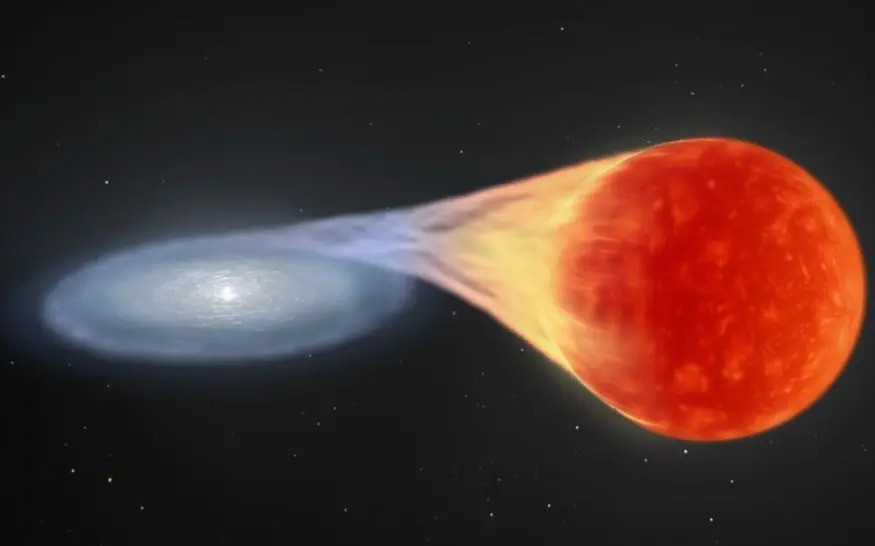Another Type Ia supernova has flared in a distant galaxy. Such events occur in binary systems in which one of the stars is a white dwarf. At some point, an uncontrolled thermonuclear reaction begins in the matter flowing to it from its companion.

Type Ia supernovae
Using the James Webb Space Telescope, astronomers from the Space Telescope Science Institute (STScI) have discovered a supernova. The newly discovered stellar explosion, named SN 2023adsy, is the most distant known representative of these Type Ia phenomena. The discovery was detailed in a scientific paper published June 7 on the arXiv preprint server.
Supernovae are powerful and bright stellar explosions. They are important to the scientific community because they provide clues to understanding the evolution of stars and galaxies. In general, they are divided into two groups based on their atomic spectra: Type I (without hydrogen in the spectrum) and Type II (with hydrogen spectral lines).
Type Ia supernovae (SN Ia) occur in binary systems in which one of the luminaries is a white dwarf. Stellar explosions of this type are important to the scientific community because they provide significant clues about the evolution of stars and galaxies.
Spectral class of the supernova star and redshift
SN 2023adsy was first identified in 2023 as a transient object in the JADES-GS+53.13485-27.82088 galaxy with a redshift of 2.9. Further observations of SN 2023adsy have indicated that it may be a Type Ia supernova.
The resulting images show that SN 2023adsy has a strongly red-shifted spectrum, which may be due to significant attenuation of dust from the parent galaxy JADES-GS+53.13485-27.82088. However, this galaxy has relatively low mass, metallicity, and brightness, hence indicating that SN 2023adsy may be a red galaxy.
The study found that SN 2023adsy exhibited strong spectral lines of ionized calcium (Ca II) in its spectrum with a measured velocity of about 19,000 km/s. This is a relatively high rate compared to the general population of known SNe Ia.
Features of supernova SN 2023adsy
The astronomers emphasize that although these features of SN 2023adsy are also observed in some calcium-rich Type Ia supernovae, the new find is inherently brighter than the general population of low redshift calcium-rich SNe Ia.
Summarizing the results, the authors of the paper note that more observations of Type Ia supernovae are needed to find out whether SN 2023adsy is an outlier among the SNe Ia population because of its features. The researchers want to find out if the energy distribution in the spectrum of these flares changes depending on which stars produced them and what kind of environment they had.
According to phys.org


